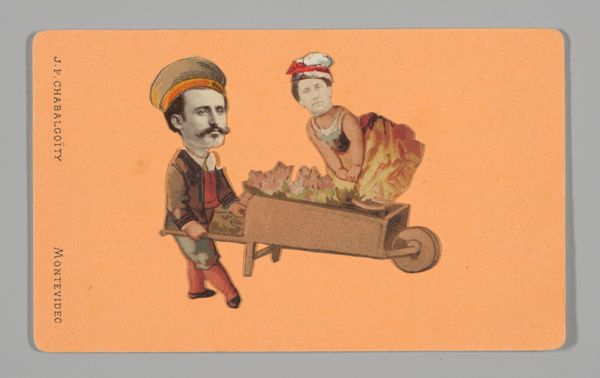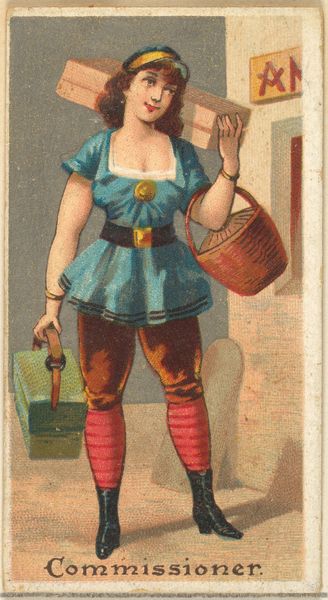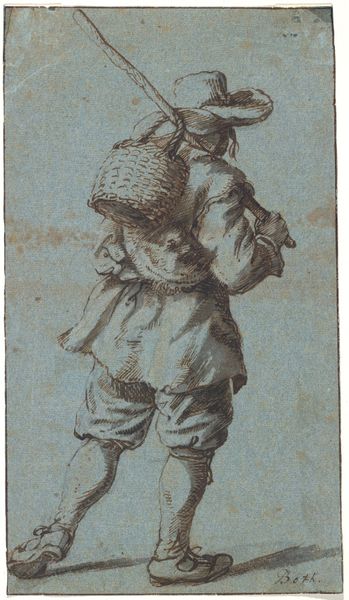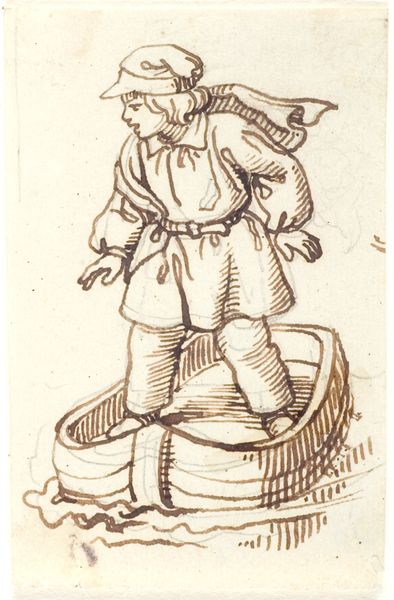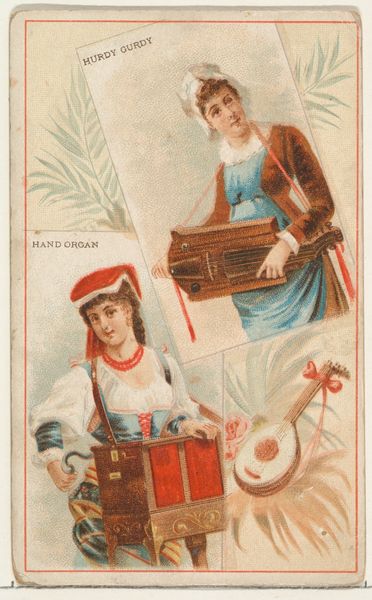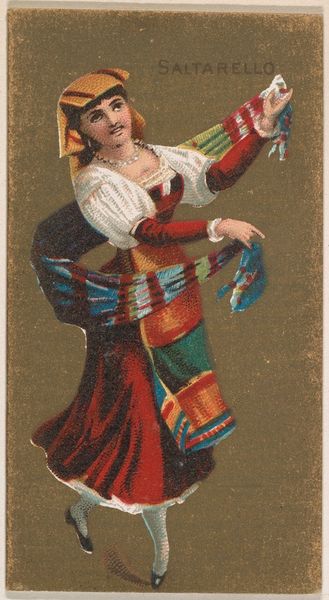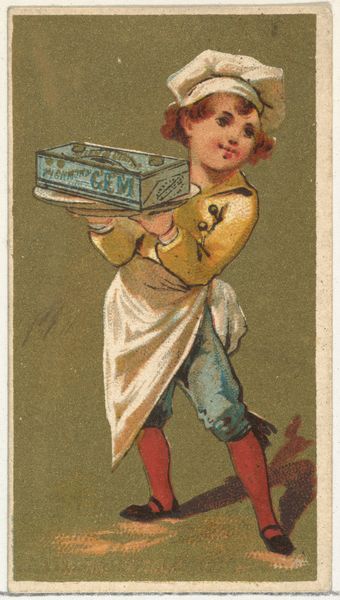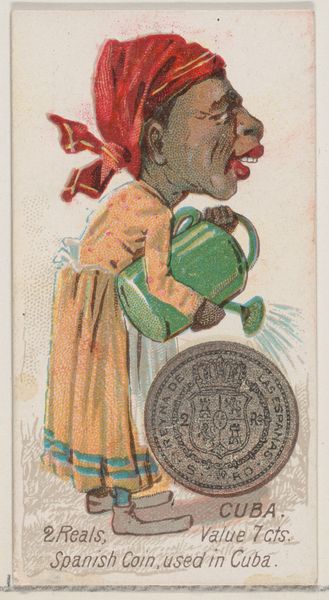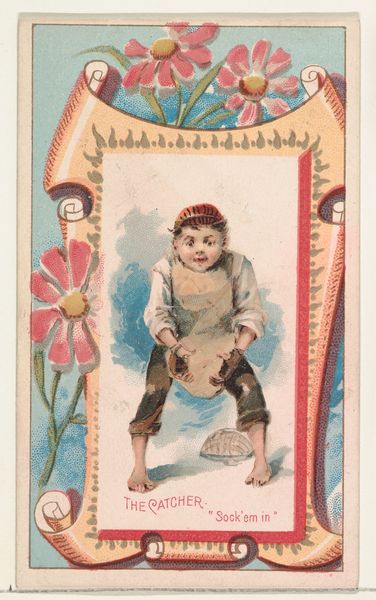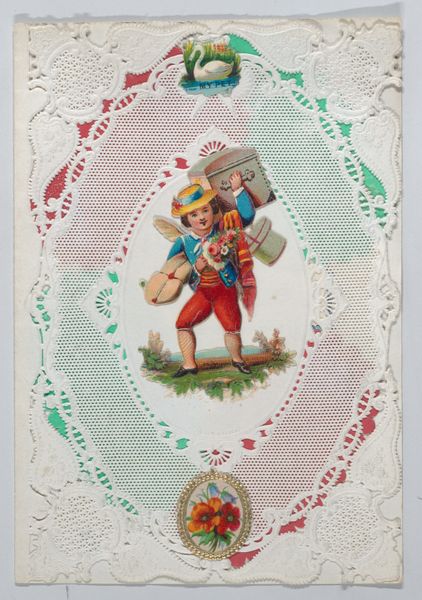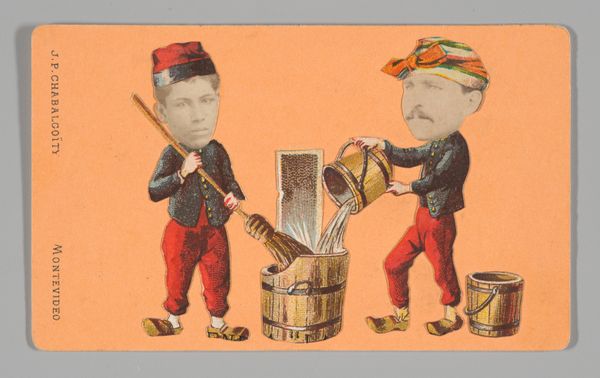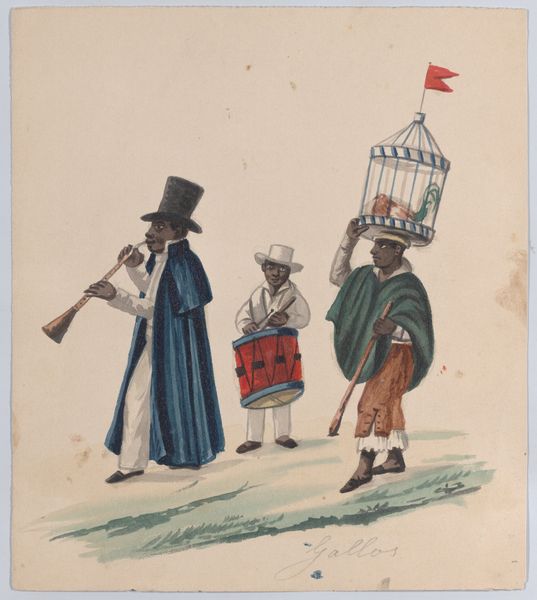![[Photo Collage: Woman and Man Next to Well] by Juan Pedro Chabalgoity](/_next/image?url=https%3A%2F%2Fd2w8kbdekdi1gv.cloudfront.net%2FeyJidWNrZXQiOiAiYXJ0ZXJhLWltYWdlcy1idWNrZXQiLCAia2V5IjogImFydHdvcmtzLzRlMjdmOTc3LWMwMWYtNDkwNC04OWZkLTEyNDJiODMzZTMxNy80ZTI3Zjk3Ny1jMDFmLTQ5MDQtODlmZC0xMjQyYjgzM2UzMTdfZnVsbC5qcGciLCAiZWRpdHMiOiB7InJlc2l6ZSI6IHsid2lkdGgiOiAxOTIwLCAiaGVpZ2h0IjogMTkyMCwgImZpdCI6ICJpbnNpZGUifX19&w=3840&q=75)
[Photo Collage: Woman and Man Next to Well] 1870 - 1880
0:00
0:00
collage, photography
#
portrait
#
collage
#
photography
#
genre-painting
Dimensions: Mount: 10.5 x 6.3 cm
Copyright: Public Domain
Editor: So, we’re looking at a quirky photo collage from around 1870 to 1880, "[Photo Collage: Woman and Man Next to Well]" by Juan Pedro Chabalgoity. There’s something really odd and humorous about it, especially how the heads seem pasted onto these little fairytale bodies. What jumps out at you? Curator: I'm intrigued by the labor evident in the piece. Look at how it's constructed. It’s a photographic collage; think of the process of physically cutting, pasting, and assembling those images in a pre-digital era. It reflects a certain social dynamic too, perhaps poking fun at class or gender roles through its absurd juxtaposition of faces and bodies. Editor: I hadn't thought about that level of handiwork. I was caught up in how bizarre the result is. It is definitely a humorous depiction, it would be really funny at the time. The pasted heads seem kind of crude by today’s standards, almost like an early meme. Curator: Exactly! And this brings up questions about production. Was this mass-produced? A one-off? What kind of labor was involved, and who had access to these materials and this technology? This labour would require skill in material usage, composition to glue it all together nicely. It disrupts conventional notions of high art through it’s creation methods. The fact that it has a funny social context further establishes itself against Fine Arts. Editor: So, by focusing on how it was made, and who was making it, we understand its social value much better? Curator: Precisely. Consider this collage a product of its time, reflecting the budding technological advancements and a changing social landscape. This invites reflection on our modern consumerist values versus this hands-on practice. Editor: That definitely shifts my understanding of it. Thanks for pointing that out. I won't look at collage the same way now! Curator: Indeed. Every piece tells a story far beyond its immediate visual impact if you consider the materials, the maker and their methods.
Comments
No comments
Be the first to comment and join the conversation on the ultimate creative platform.

